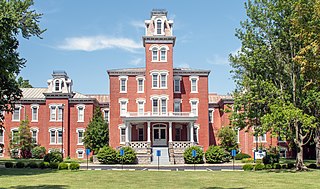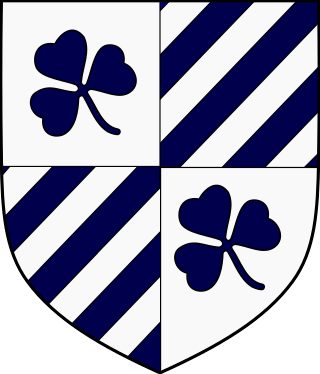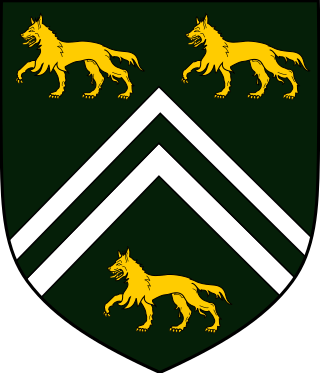
Dillard University is a private, historically black university in New Orleans, Louisiana. Founded in 1930 and incorporating earlier institutions founded as early as 1869 after the American Civil War, it is affiliated with the United Church of Christ and the United Methodist Church.
The East–West Center (EWC), or the Center for Cultural and Technical Interchange Between East and West, is an education and research organization established by the U.S. Congress in 1960 to strengthen relations and understanding among the peoples and nations of Asia, the Pacific, and the United States. It is headquartered in Honolulu, Hawaii.
El Camino College is a public community college in Alondra Park, California. It consists of 37 buildings spanning an area of roughly 26 acres (11 ha). It is one of two community colleges serving Southern California's South Bay area.

Missouri Southern State University is a public university in Joplin, Missouri. It was established in 1937 as Joplin Junior College. The university enrolled 4,346 students in Fall 2021.

Cottey College is a private women's college in Nevada, Missouri. It was founded by Virginia Alice (Cottey) Stockard in 1884. Since 1927 it has been owned and supported by the P.E.O. Sisterhood, a philanthropic women's organization based in Des Moines, Iowa. For most of its history, Cottey was a two-year liberal arts college, and in 2011 it achieved accreditation as a four-year baccalaureate-granting college. It had 302 full-time students enrolled in 2021.

Menlo College is a private college specializing in business and is located in Atherton, California.

Keenan Hall is one of the 32 Residence Halls at University of Notre Dame. It is located on North Quad in front of North Dining hall, between Zahm Hall and Stanford Hall. Keenan Hall shares the building and The Chapel of The Holy Cross with adjacent dorm Stanford

Alumni Hall is one of the 32 Residence Halls on the campus of the University of Notre Dame and one of the 16 male dorms. It is located on South Quad adjacent to "Main Circle", across from the law school building, and it hosts 234 undergraduates.

Sequoia Hall is the home of the Statistics Department on the campus of Stanford University in Stanford, California.
There are currently 33 undergraduate residence halls at the University of Notre Dame, including 32 active residence halls and Zahm Hall, which serves as a transition dorm when residence halls undergo construction. Several of the halls are historic buildings which are listed on the National Register of Historic Places. Each residence hall is single-sex, with 17 all-male residence halls and 15 all-female residence halls. Notre Dame residence halls feature a mixed residential college and house system, where residence halls are the center of the student life and some academic teaching; most students stay at the same hall for most of their undergraduate studies. Each hall has its own traditions, events, mascot, sports teams, shield, motto, and dorm pride. The university also hosts Old College, an undergraduate residence for students preparing for the priesthood.

Auburn Adventist Academy is a co-educational, Seventh-day Adventist, boarding high school in Auburn, Washington, United States that was founded in 1919. It is operated by the Washington Conference of Seventh-day Adventists and is part of the Seventh-day Adventist education system, the world's second largest Christian school system.
Each residence hall or dormitory at the University of San Francisco contains at least one lounge, a kitchen, and laundry facilities. Halls are secured with a 24-hour desk staff. Community programs and activities are planned by Resident Advisors, Resident Ministers, Residence Hall Council, and Residence Hall Association.

Roble Hall is a dormitory at Stanford University. It was built in 1917 to house women students. It is the oldest dormitory at Stanford that is still in use as a dormitory. It takes its name from the Spanish word for oak tree, although its pronunciation has been anglicized from “robe-leh” to “robe-lee”.

Housing at Georgetown University consists of 13 residence halls at the main campus and a law center campus. Housing on Georgetown's main campus is divided between "halls," usually more traditional dormitories, and "villages", usually less traditional apartment complexes. In addition, Georgetown operates many townhouses in the Georgetown neighborhood, usually for second, third, and fourth-year students.

Ohio Valley University was a private Christian college located between Parkersburg and Vienna in West Virginia. Founded in 1958, the school integrated education with teachings of the Christian faith. The college was physically located on two separate campuses totalling 267 acres (108 ha). At one time, OVU offered bachelor's degrees in more than 30 different subject areas, but scaled back its academic options as enrollment numbers and financial stability dropped significantly in recent years. The college was accredited by the Higher Learning Commission, and was placed under academic probation in 2020 by the Higher Learning Commission due to ongoing long-term financial struggles. In December 2021, the OVU Board of Directors voted to close the college after the Fall 2021 semester. The West Virginia Higher Education Policy Commission voted to revoke OVU's authority to grant degrees shortly thereafter. Seniors were allowed to finish their degrees without the loss of any credit hours in the spring semester of 2022 at several other institutions of higher education related to Churches of Christ through "teach out" agreements. In August 2022 it was reported to WTAP News that OVU had lost all academic records since 1960 and had no records of anyone's attendance at the school.
Since the founding, Stanford University has provided on-campus housing for students. Today, all undergraduate students, most graduate students, and many graduate employees use campus housing. While not all graduate students are eligible for campus or subsidized off-campus housing, of those that are, only 64% are able to take advantage of this opportunity due to the limited housing stock. Student Housing at Stanford is currently part of Residential & Dining Enterprises, an in-house standalone vendor within the Stanford affiliated network of businesses.

The main campus of the Georgia Institute of Technology occupies part of Midtown Atlanta, primarily bordered by 10th Street to the north, North Avenue to the south, and, with the exception of Tech Square, the Downtown Connector to the East, placing it well in sight of the Atlanta skyline. In 1996, the campus was the site of the athletes' village and a venue for a number of athletic events for the 1996 Summer Olympics. The construction of the Olympic Village, along with subsequent gentrification of the surrounding areas, significantly changed the campus.

The Quadrangle Dormitories are a complex of 39 conjoined residence houses at the University of Pennsylvania, in Philadelphia, Pennsylvania, United States. The architectural firm of Cope and Stewardson designed the houses in an exuberant Neo-Jacobean version of the Collegiate Gothic style, and completed most of them between 1894 and 1912. The dormitories stretch from 36th to 38th Streets and from Spruce Street to Hamilton Walk. West of the Memorial Tower at 37th Street, the houses on the north side follow the diagonal of Woodland Avenue and form a long triangle with the houses on the south side. From 1895 to 1971, the dormitories housed only male students.














